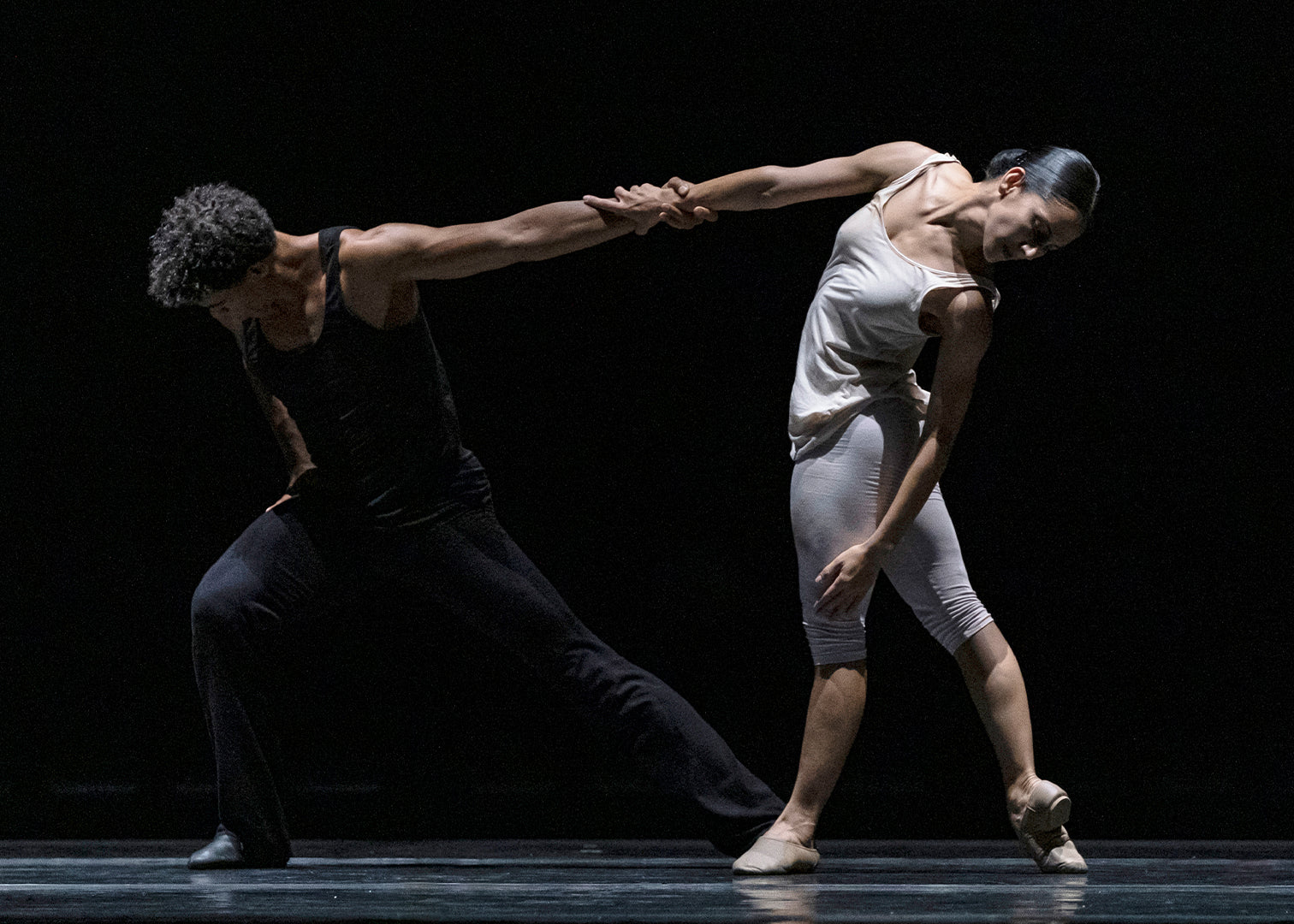From the darkness of the stage appears the form of a horse. His glossy black coat merges with the surroundings; black sand, black walls, dim light. Marin follows close behind. Every so often he kneels and strikes his bare back with the horse’s tail.
Religious, ritualistic imagery runs through “Golgota.” An unending array of religious paraphernalia is brought ceremoniously onstage at varying intervals; candles, incense, bells, tall conical hats. In the dim light it feels as if we are watching the practices of a secret brotherhood. Indeed, “Golgota” is based on the Spanish rituals of Holy Week, in which religious brotherhoods process through the streets of Seville in homage to the Passion. The choral tone of Renaissance composer Tomás Luis de Victoria’s music, performed live by countertenor Christophe Baska (with Adrien Mabire on cornet and Marc Wolff on lute) adds to “Golgota’s” strange, cult-like atmosphere.
Among this imagery is the horse; silent, regal, strong. As Marin dances, his bare feet scuffing soft rhythms in the sand, his hands tapping out accents across his body, the horse circles him, guided by the expertise of its rider, Bartabas.
Yet these performers are not separate. The piece revolves around an intimate connection between horse, rider and dancer. A delicate nose touch on Marin’s shoulder and the horse becomes another partner in his dance, Bartabas’ movements equally choreographed as he guides his horse into tight circles and neat stepping patterns with his legs alone. Sometimes Marin responds to the movements of the horse, his feet echoing the neat criss-crossing of its hooves, at others he drums out the rhythms of his dance before the horse’s strong and intelligent gaze.
The precision and detail in this work is incredible. From a near standstill Bartabas can encourage his horse to skip into a controlled canter, or fold gracefully into the floor in a striking, spot lit image. Marin has equal precision in his work; rhythm seems to exist in every inch of his body. He clicks, taps, claps and uses his voice in an inventive, untraditional style of Flamenco.
In many ways “Golgota” is an exchange of skills between horse, rider and dancer; a shared artistry built on refinement and detail. It’s a relationship echoed in a final twist, where the oddness of “Golgota’s” religious imagery finally serves to merge man and horse as one. In hoof-like shoes, supported between two soldiers, Marin is paraded around the stage towards a crucifix—the enduring image of Christ’s journey to Calvary. A jester (played by actor William Panza) skitters in circles around the base of the cross, jeering and ringing bells as strobes flash like lightening and Marin drums thunderous rhythms with his feet. It gives a devilish, almost comical edge to the final moments, but one that’s in keeping with the dark, cult-like feel which has run through this show.
Despite the show’s slow, measured pace and its absurd assortment of religious imagery, the final, silent moments of “Golgota”end the performance on a sublime note. A riderless horse enters, Bartabas knelt nearby. Repeatedly the horse slowly falls and regains its feet—alone. Overly dramatic yes, but a picturesque image of “Golgota’s” unique blend of artistry.









comments